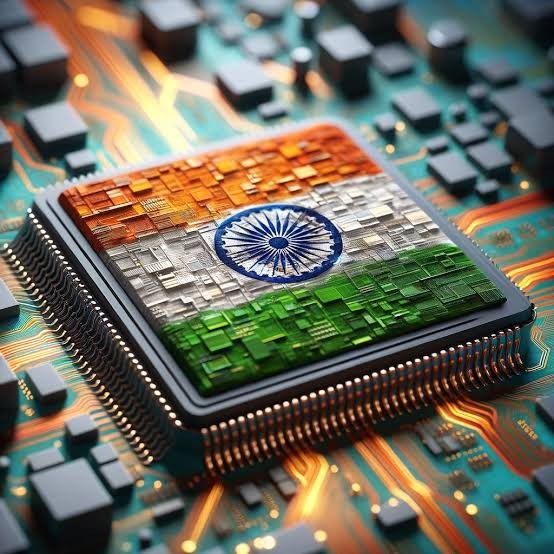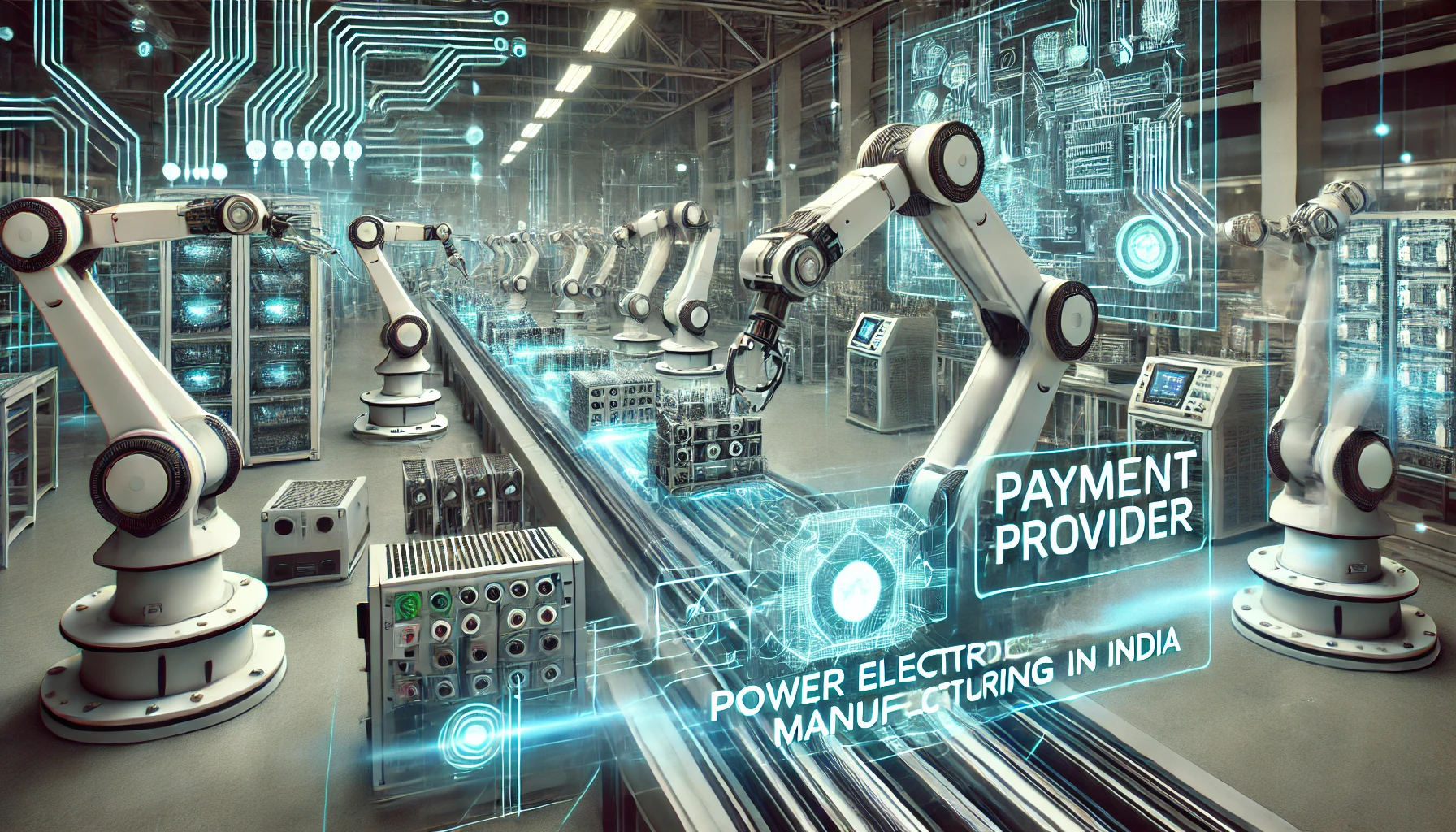Author: Shin Hari
Introduction
India is positioning itself as a global leader in the manufacturing of power electronics, particularly for payment systems. With the rise of digital payments, the demand for reliable power solutions has surged, creating a thriving market for innovative technologies. Power electronics ensure the seamless functioning of payment systems, supporting the nation’s digital transformation. But why is India becoming the go-to destination for manufacturing these crucial components?
Understanding Payment Provider Power Electronics

Power electronics[1] is the backbone of any payment system, handling the efficient conversion and control of electric power. It is integral to devices like POS systems, ATMs, and payment kiosks. These systems demand high performance and reliability to maintain uninterrupted operations, especially in India’s diverse and fast-paced markets. Without robust power electronics, digital payments could face frequent disruptions, affecting user trust.
Why India is Emerging as a Hub for Electronics Manufacturing
India’s electronics manufacturing industry has grown exponentially, thanks to strategic government initiatives and a highly skilled workforce. The country offers a cost-effective alternative to traditional manufacturing giants like China, attracting global investments. Furthermore, India’s focus on infrastructure development and innovation has made it a favorable destination for building cutting-edge technologies for the payment ecosystem[2].
The Role of Power Electronics in Payment Systems
Key Components of Payment System Power Electronics
Power electronics in payment systems comprise several critical components that ensure their efficient operation:
- Power Supply Units: These maintain a consistent flow of electricity to prevent system downtime.
- Voltage Regulators and Converters: These components stabilize voltage, ensuring devices function smoothly even during power fluctuations.
By integrating these technologies, payment systems can operate reliably in India’s diverse climate and infrastructural conditions.
Importance of Power Reliability in Payment Systems
In the digital payment ecosystem, power failures can disrupt transactions and tarnish customer experiences. Reliable power electronics minimize such risks, allowing seamless processing[3] of payments across urban hubs and remote villages. This reliability is crucial for India’s mission to achieve a cashless economy.
Growth of Electronics Manufacturing in India
The Impact of “Make in India” on Electronics Manufacturing

The “Make in India” initiative has played a crucial role in enhancing domestic electronics manufacturing by attracting investments and encouraging local production. This initiative provides subsidies, tax benefits, and streamlined regulations to encourage domestic and international players to invest in India. It has also led to the establishment of multiple manufacturing clusters, further strengthening the country’s electronics ecosystem.

Key Players in India’s Electronics Sector
India’s manufacturing landscape is supported by major players such as Tata Electronics, Bharat Electronics Limited (BEL), and Dixon Technologies. These companies, along with emerging startups, are driving innovation in power electronics tailored for payment systems, making India a leader in this space.

Increasing Foreign Investments in the Industry
Foreign direct investments (FDI) in India’s electronics sector have seen a significant rise, driven by favorable policies and a robust domestic market. Global giants like Foxconn and Samsung are expanding their operations in India, leveraging its strategic location and cost advantages.
Power Electronics for Digital Payment Infrastructure
Evolution of Digital Payments in India
India’s digital payment journey has been nothing short of revolutionary. From the launch of UPI (Unified Payments Interface) to widespread adoption of contactless card payments, the country has rapidly embraced cashless solutions. As a result, the demand for advanced power electronics has surged to support this growing infrastructure.
The Need for Advanced Power Management Solutions
With millions of digital transactions[4] taking place daily, efficient power management is no longer optional—it’s a necessity. Power electronics must handle high transaction volumes without compromising on reliability or energy efficiency. This has opened new avenues for innovation in the sector.
Challenges in Power Electronics Manufacturing in India
Supply Chain Issues
One of the key challenges for manufacturers is the dependence on imported components, which can lead to delays and higher production costs. Developing a robust local supply chain is essential to overcome these bottlenecks and reduce reliance on foreign markets.
Technological Barriers and Skill Gaps
While India has a growing pool of talent, there’s still a shortage of advanced R&D facilities and highly specialized skills. Bridging this gap will be critical to achieving global competitiveness in power electronics manufacturing.
Environmental and Energy Efficiency Concerns
The electronics sector is under growing pressure to address its environmental footprint as concerns about sustainability and waste management intensify. Manufacturers need to adopt sustainable practices, such as energy-efficient designs and waste recycling, to align with global standards.
Opportunities in the Sector
Growing Market for Payment Devices
The expansion of e-commerce, retail, and fintech sectors has created a booming market for payment devices[5]. This growth is driving the demand for innovative power solutions tailored to India’s unique requirements.
Supportive Government Policies and Subsidies
Government schemes like PLI (Production-Linked Incentive) are providing significant support to electronics manufacturers. These policies have made it easier for businesses to scale operations and invest in advanced technologies.
R&D and Innovation Opportunities
India’s focus on research and development is opening up new possibilities in power electronics. From AI-driven solutions to IoT-enabled devices, there’s immense potential to create cutting-edge products for global markets.
Innovations in Power Electronics for Payments
Role of IoT and AI in Payment Systems
The integration of IoT and AI in payment systems is transforming how power electronics function. These technologies enable predictive maintenance, optimize power usage, and enhance device performance, making systems smarter and more reliable.
Energy-Efficient Solutions in Power Electronics
Energy efficiency is a top priority for manufacturers. Innovations such as GaN (Gallium Nitride) semiconductors are helping reduce power consumption while maintaining high performance, paving the way for greener payment systems.
Case Studies: Success Stories in India
Leading Power Electronics Companies in India
Companies like Exide Industries and Havells have made significant strides in developing solutions for digital payments. Their success demonstrates India’s potential to become a global hub for power electronics.
Projects Driving Change
Collaborative projects between the government and private players, such as Electronics Manufacturing Clusters (EMCs), are fostering innovation and addressing industry challenges effectively.
Future of Payment Provider Power Electronics in India
Predictions and Trends
The future of power electronics manufacturing in India is bright, with predictions pointing toward continued growth in domestic production and exports. Emerging trends include the use of renewable energy sources to power electronics manufacturing units, further enhancing sustainability.
Potential for Export Growth
With increasing global demand for reliable power solutions, India is well-positioned to become a leading exporter of power electronics for payment systems. This could significantly boost the country’s economic growth in the coming years.
Conclusion
India’s payment provider power electronics manufacturing sector is on the rise, driven by government support, technological advancements, and a growing domestic market. Despite challenges, the opportunities are immense, and with the right strategies, India is poised to become a global leader in this domain.
FAQs
What is the significance of power electronics in payment systems?
Power electronics are crucial for ensuring reliable and efficient power supply to payment devices, enabling seamless digital transactions.
Which companies lead power electronics manufacturing in India?
Key players include Tata Electronics, Bharat Electronics Limited, Dixon Technologies, and several innovative startups.
How has the government supported electronics manufacturing?
The Indian government has introduced policies like “Make in India” and the PLI scheme, offering financial incentives and infrastructure support.
What are the main challenges faced by the sector?
Challenges include supply chain dependencies, technological skill gaps, and the need for sustainable manufacturing practices.
What innovations are shaping the future of power electronics for payments?
IoT-enabled smart systems, AI-driven power management, and energy-efficient technologies are driving innovation in the sector.

